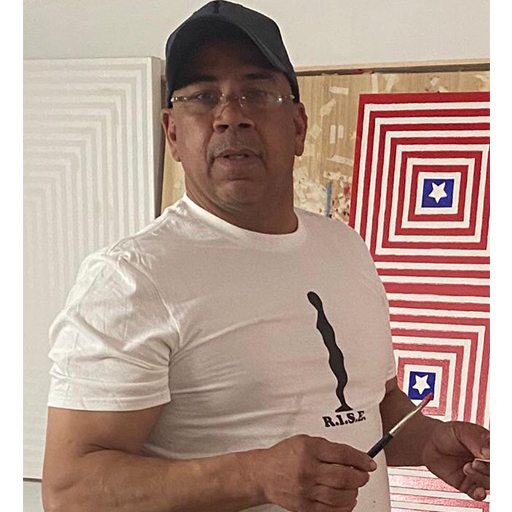About christos farantos

Coming forth, a child is born out of an interracial union at a time of racial unrest in 1961, the dawning of the Civil Rights Movement. Sheltered from the violence of America, surprisingly in rural Alabama, the child lives with his maternal grandmother, Nelly Speidel, off the bounties of the land. Under her tutelage, he attentively listens, watches and learns the beauty of crocheting and tablecloth making. In an opportunity to flee the south for Harlem, NY, he’s exposed to the brilliance of Picasso, Van Gogh, and Rodin as well as the superior, literary minds of James Baldwin, Malcolm X, and Rev. Dr. Martin Luther King Jr., thanks to a flamboyant and intuitive educator.
Christos Farantos, Tatos as he’s known in the New York City art circles, exploded on the scene in the 1980s. The art salons of this period often featured his work. Top billing venues included Green Street Gallery in Soho and the Fun Gallery Shows Art in Greenwich Village. The Time Square Art Exhibitions provided the canvas, where his work dropped the jaws of thousands. Being a part of the street graffiti experience cultivated a bond with up-in-coming masters as Jean-Michel Basquiat and Keith Haring, which propelled his work into higher dimensions. The diverse cultural textures of the city, especially the atmosphere of Hell’s Kitchen, inspired Tatos to birth “William the Homeless Man”– an abstract Expressionist work in broad strokes and warm colors of yellow, green, and pink, depicting the frailties of humanity hidden behind the veil of beauty. He followed this piece with “Genesis Man”, a single dark figure surrounded by brightly colored horizontal and vertical lines.
In the 1990s, the New York City art arena grew northward and beyond Hudson Valley. Tatos began showing his work in The Nelson Macker Fine Art Gallery in Port Chester, Connecticut. In 1994, he introduced his signature work, “Baby Star”. Here’s where abstraction intersects with political commentary– philosophical and thought-provoking, all in the same stroke. When asked, Tatos shares, “One (the viewer) would have a dialogue. What does the flag represent? How does the flag represent me as a black person? Does the flag symbolize black people as a metaphysical entity? What’s the deeper meaning of the red, white, and blue? Art speaks to the depth of the seer, and in that exchange, the eyes seek to possess that which one sees.”
Today, Tatos is passionate about stamping out illiteracy and is a tireless advocate for R.I.S.E. (Resistant Illiteracy Support Education). He resides in Westchester County, and his work remains transformative as an anecdote to worldwide social injustice.